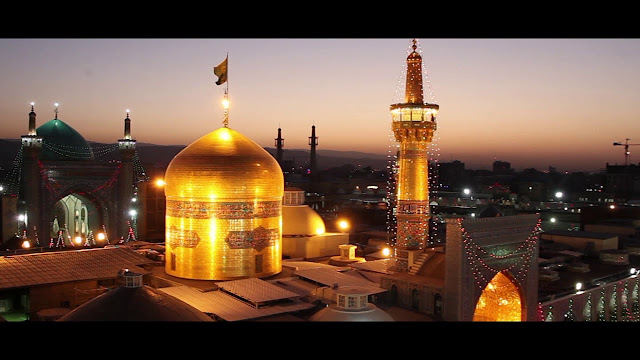Top 5 Historic Mosque in the world
(1) Masjid Al Nabawi
Al-Masjid an-Nabawī (Arabic: المسجد النبوي, romanized: al-Masjid an-Nabawi, lit. 'The Prophetic Mosque'), known in English as The Prophet's Mosque, and also known as Al Haram, Al Haram Al Madani and Al Haram Al Nabawi by locals, is a mosque built by the last Islamic prophet Muhammad in the city of Medina in the Al Madinah Province of Saudi Arabia. It was the second mosque built by prophet Muhammad in Medina, after Masjid Quba'a, and is now one of the largest mosques in the world. It is the second holiest site in Islam, after the Masjid al-Haram in Mecca.[2]
It is generally open regardless of date or time, and has only been closed to visitors once in modern times, as Ramadan approached during the 2020 COVID-19 pandemic.[3]
Muhammad shared in the construction of the mosque. Originally an open-air building, the mosque served as a community center, a court of law, and a religious school. There was a raised platform or pulpit (minbar) for the people who taught the Quran and for Muhammad to give the Friday sermon (khutbah). Subsequent Islamic rulers greatly expanded and decorated the mosque, naming its walls, doors and minarets after themselves and their forefathers.
(2) IMAM ALI MOSQUE (NAJAF)
The Sanctuary of Imam 'Ali (Arabic: حَرَم ٱلْإِمَام عَلِيّ ابن ابو فراس, romanized: Ḥaram al-ʾImām ʿAlī), also known as the Mosque of 'Ali (Arabic: مَسْجِد عَلِيّ, romanized: Masjid ʿAlī), located in Najaf, Iraq, is a Shi'ite Muslim mosque housing the tomb of 'Alī ibn Abī Tālib, the cousin of Muhammad and the first Shi'ite Imam after him, and the fourth Sunni Rashid Caliph. According to Shi'ite belief,[1] buried next to Ali within this mosque are the remains of Adam and Nuh (Noah).[1][2] Each year millions of pilgrims visit the Shrine and pay tribute to Imam Ali.
Religious status and precincts[edit]
As the burial site of Shia Islam's second most important figure,[8] this Mosque is considered by all Shi'ites as the fourth holiest Islamic site.[8][9][10][11][12][13] The Boston Globe reports "for the Muslim Shias, Najaf is the fourth holiest city, behind Mecca and Medina in Saudi Arabia and Al-Aqsa Mosque in Palestine."[14][15][16] It is estimated that only Karbala, Mecca and Medina receive more Muslim pilgrims.[14] A hadith attributed to Ja'far as-Sādiq, the Sixth Imami Shī'ite Imām, mentions the site as one of "five definitive holy places that we respect very much".[9]
The site is visited annually by at least 8 million pilgrims on average, which is estimated to increase to 20 million in years to come.[17] Many Shī'ites believe that 'Alī did not want his grave to be desecrated by his enemies and consequently asked his friends and family to bury him secretly. This secret gravesite is supposed to have been revealed later during the Abbasid caliphate by As-Sadiq.[18] Most Shī'ites accept that 'Alī is buried in Imām 'Alī Mosque, in what is now the city of Najaf, which grew around the shrine.[19]
It has also been narrated from As-Sadiq that Imām 'Alī Mosque is the third of five holy places: Mecca, Medina, Imām 'Alī Mosque in Najaf, Imam Husayn Shrine in Karbalā, and the Shrine of his daughter Fāṭimah in Qom.[20]
The Imam Reza shrine (Persian: حرم امام رضا) in Mashhad, Iran is a complex which contains the mausoleum of Imam Reza, the eighth Imam of Twelver Shias. It is the largest mosque in the world by area. Also contained within the complex are the Goharshad Mosque, a museum, a library, four seminaries,[1] a cemetery, the Razavi University of Islamic Sciences, a dining hall for pilgrims, vast prayer halls, and other buildings.
The complex is a tourism center in Iran[2][3] and has been described as "the heart of the Shia Iran"[4] with 25 million Iranian and non-Iranian Shias visiting the shrine each year, according to a 2007 estimate.[5] The complex is managed by Astan Quds Razavi Foundation and currently headed by Ahmad Marvi, a prominent Iranian cleric.
The shrine itself covers an area of 267,079 square metres (2,874,810 sq ft) while the seven courtyards which surround it cover an area of 331,578 square metres (3,569,080 sq ft), totaling 598,657 m2 (6,443,890 sq ft).[6] Every year the ceremony of Dust Clearing is celebrated in the Imam Reza shrine
(4)Dome of Rock /Qubbat As Sakhra
Christians and Muslims in the European Middle Ages believed the Dome itself to be the Temple of Solomon (Templum Domini). The Knights Templars were quartered there in the Crusades, and Templar churches in Europe imitated its plan.

















Comments
Post a Comment
Pleae ,let me know if you have any doubt